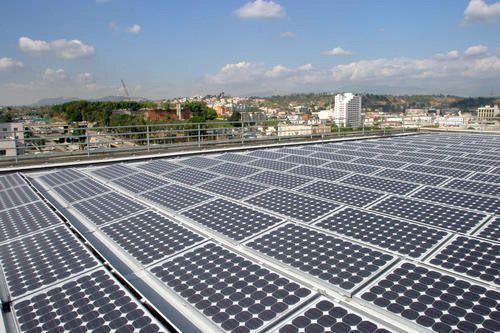
Two years ago, under the auspices of the American Wind Energy Association, a group of us from the wind industry began working with the Department of Energy, General Electric, AEP, and many others to take a hard look at what it would take to get 20% of America's electric supply from wind energy. The resulting report is helping lay the groundwork for a dramatic change in our approach to energy. For years, the wind energy community has argued that smart investment in transmission, siting, manufacturing and technology could allow wind power to take the main stage for our nation's electricity. The report largely vindicates that belief, outlines the benefits, and illuminates the path to get there.
These past months have underscored the serious shortcomings in U.S. energy policy. $140 oil, $4 gasoline and run-ups in the cost of coal and natural gas are taking us to new price plateaus. Energy cuts across nearly every issue that matters to our daily lives -- economic well-being, national security, global climate change. As our energy woes devolve from concern to crisis, it is time we look more seriously -- and honestly -- for answers.
Renewables alone will not solve this crisis. Those of us with years in the industry know both the promise and limitations of renewable energy, and readily acknowledge that we don't have all the answers. But renewables can make an enormous dent in the problem. According to our report, a move to twenty percent wind would decrease carbon emissions from electricity by twenty-five percent. Twenty percent wind would support about 500,000 jobs in the U.S., 150,000 of which would come directly from the wind industry. Revenues to local communities in the form of property taxes and other payments would run more than $1.5 billion annually. Twenty percent wind would significantly reduce demand for natural gas, our most versatile and cleanest-burning fuel, which is incredibly valuable for heating, petrochemical production, transportation and other uses.
All of these things can be achieved.
Similar investment in solar power could mean an additional 10% of our energy could be supplied by the sun. And long term investment in increased energy efficiency, including cars that can be powered by electricity, will mean a substantial reduction in our dependence on foreign oil.
What will be required is a national commitment on the part of elected leaders and substantial investment by the business community. There are certainly constraints to our ability to multiply our wind farms at such a serious rate, but, as the study suggests, these obstacles can be overcome. Chief among them is the need for significant new energy infrastructure, especially extensive transmission lines.
We have reached a turning point. Wind energy is no longer the pet project of environmentalists. It is a serious business with serious players, including General Electric, Mitsubishi, Siemens, and many other global titans. It is also part of a real answer to some of the most serious problems we face. If we combine our efforts to expand renewables with strong efficiency standards and a substantial increase in conventional domestic energy production, we can be within reach of solving our energy crisis.
This is not the kind of quick fix that Washington so often hopes for while doing nothing in the interim. There are no quick fixes. If we are going to confront our energy crisis successfully, we have to be focused on the long game. In ten years we were able to take our wind energy company from a two-man operation to the multi-billion dollar business it is today. In a similar time period Texas has seen wind grow to the point where we get nearly 5% of our electricity from the wind. We can get a lot done when we set our minds to the task. A national commitment today will mean economic growth, good jobs, a safer country, and a healthier planet. It's time to get moving.